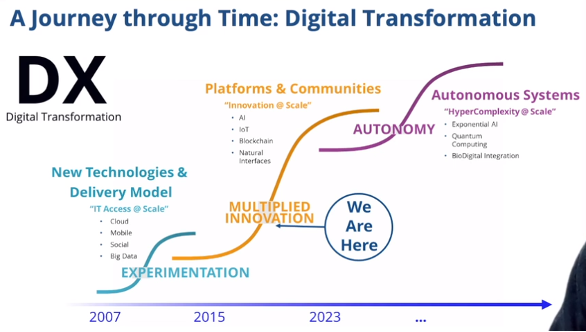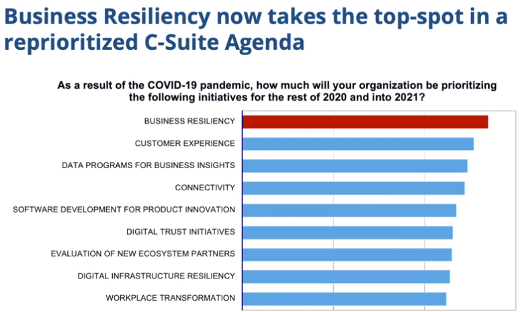Present Blog – IT Thought Leadership
Blog Present-IT thought leadership
Blog Present-IT thought leadership
IT thought leadership blog for CIOs and CTOs in Canada seeking resources to drive IT as a business contributor: hybrid cloud, infrastructure, managed services and security and IT recruitment.
You Missed the Nutanix Economic Benefits Summit? Here are the highlights
Marc Therrien_  Last week Nutanix ran their Nutanix Economic Advantage Summit. It was an opportunity to hear from the new President and CEO Rajiv Ramaswami on his vision for the company. His vision is clear: make the cloud invisible and make managing block, file, and containers seamless and use software that promotes innovation and allows a better time to market.
Last week Nutanix ran their Nutanix Economic Advantage Summit. It was an opportunity to hear from the new President and CEO Rajiv Ramaswami on his vision for the company. His vision is clear: make the cloud invisible and make managing block, file, and containers seamless and use software that promotes innovation and allows a better time to market.
He shared his insights on how Nutanix is helping business and IT leaders navigate the current challenges, build resiliency, and prepare for a digital future while focused on delivering economic advantage for their businesses.
One of the points he mentioned was how the pandemic accelerated the need for digital transformation. The statistics show that 1/3 of companies have made a shift towards digital transformation.

Covid will not be the last disruption affecting the economy and business must be able to survive crises and adapt any to situation. Those who will survive are those that will be able to adapt.
Business Resiliency takes the top spot
Business resiliency is defined as the ability for an organisation to rapidly adapt and respond to business disruptions, while maintaining continuous business operations and its core sense of purpose. This has become a much more important initiative in the C level discussion. In fact, resiliency has become the most important factor for a company that will be forced to evolve according to the scenarios.

Resiliency involves different categories such as leadership, your brand, operations, workforce, finance and technology resiliency.
Technology resiliency is necessary for gaining business resiliency and of the companies surveyed most do not give themselves a passing grade. Also, more than half of the organisations having reflected on how their organisations performed during the crisis state that they will be making changes to their technology.
Success is a cloud smart strategy
We also had the chance to hear from Steven Kaplan, VP, customer success Finance at Nutanix who gave a great summary of the financial impacts of a traditional infrastructure or cloud first strategy.
Unfortunately, statistics show that IT is still perceived as a cost center, not a revenue center. The majority of the IT budget is still being put towards keeping the lights on so how can IT be expected to be an engine for innovation, in order to grow the business?
Steven states that companies should adopt a cloud SMART strategy. For nearly a decade, cloud-first has been the dominant approach to cloud adoption initiatives as organizations sought to drive digital transformation and modernization. CEOs would take a cloud first vision believing it to be the best economical solution without necessarily having investigated this strategy thoroughly.
A cloud smart strategy allows applications to be placed in the places that suit them best, in the most strategic and financially strong location. Leaders should prioritize the workloads to move to cloud by selecting workloads that prioritize speed, simplicity and business value. Therefore, the benefits of Cloud smart are exceptional fast migrations, cloud mobility, and the ability to leave a cloud provider if necessary.
Overall, it was a half day full of valuable information on industry trends as well as the Nutanix offering to help organizations reach a new economic advantage. Organisations are increasingly tasking IT to find and deliver rapid new business value through increased efficiency, enhanced automation, accelerated time to market, sharp innovation, and rock-solid cost savings and Nutanix is a great solution to enable all this.
Check out the sessions on demand here: https://www.nutanix.com/company/news-events/economic-advantage-summit
About Blog
The right use of technology addresses business challenges and drives business growth in all areas of an enterprise. We hope this blog will offer insight into developing strategies and tactics to enable you to identify those key drivers of growth and keep pace with and anticipate the rapid technology change of today.
Posts by Topic
- IT infrastructure (116)
- IT security (92)
- IT Innovation (59)
- Trends (51)
- Cloud (47)
- Managed services (46)
- Mobility (38)
- Digital transformation (29)
- CIO/IT leaders (28)
- Events (28)
- News (23)
- Microsoft 365 (17)
- Security (17)
- IBM (16)
- Disaster recovery (DR) (14)
- High availability (12)
- Recruitment (12)
- Storage (12)
- Big Data (11)
- Collaboration (11)
- AI (9)
- Case study (9)
- Office 365 (9)
- BYOD (8)
- Customer Experience (8)
- Hybrid Cloud (7)
- Current events (6)
- SAP Hana (5)
- Business intelligence (BI) (4)
- Converged infrastructure (4)
- Convergence / Hyper-convergence (4)
- Virtualization (4)
- Copilot (3)
- Future of retail (2)
- Retail (2)
- trend (2)
- Backups (1)
- Beacon (1)
- Blog Migrations (1)
- Contests (1)
- Infrastructure TI (1)
- Innovation TI (1)
- IoT (1)
- MDM (1)
- Stockage (1)
- Virtualisation (1)
- blockchain (1)
- cio (1)
- replication (1)
- Étude de cas (1)

